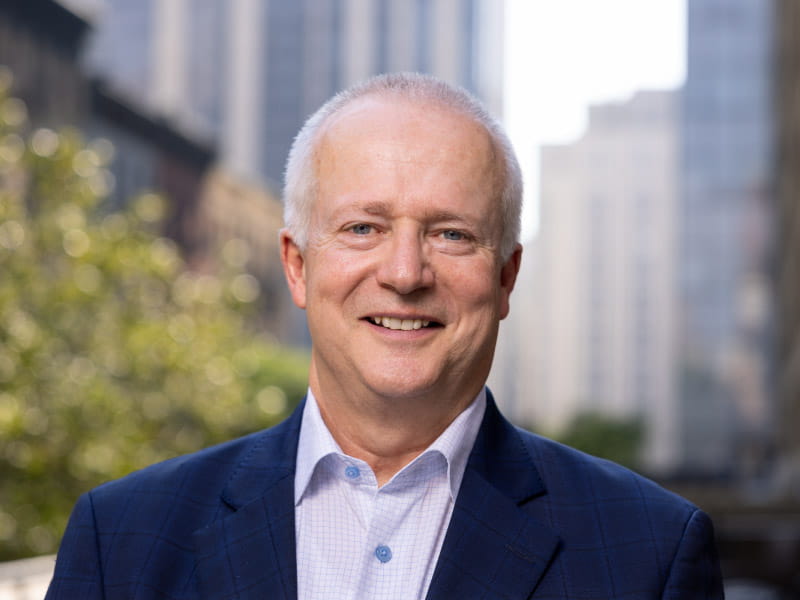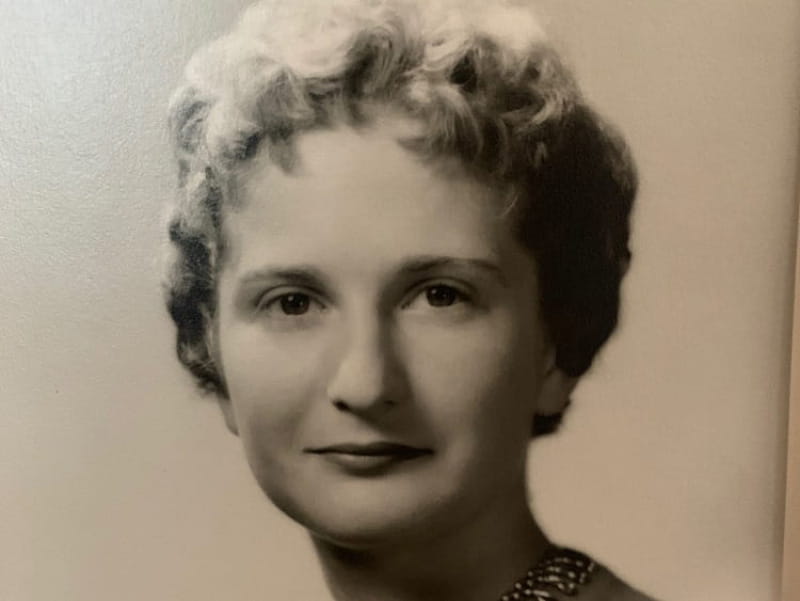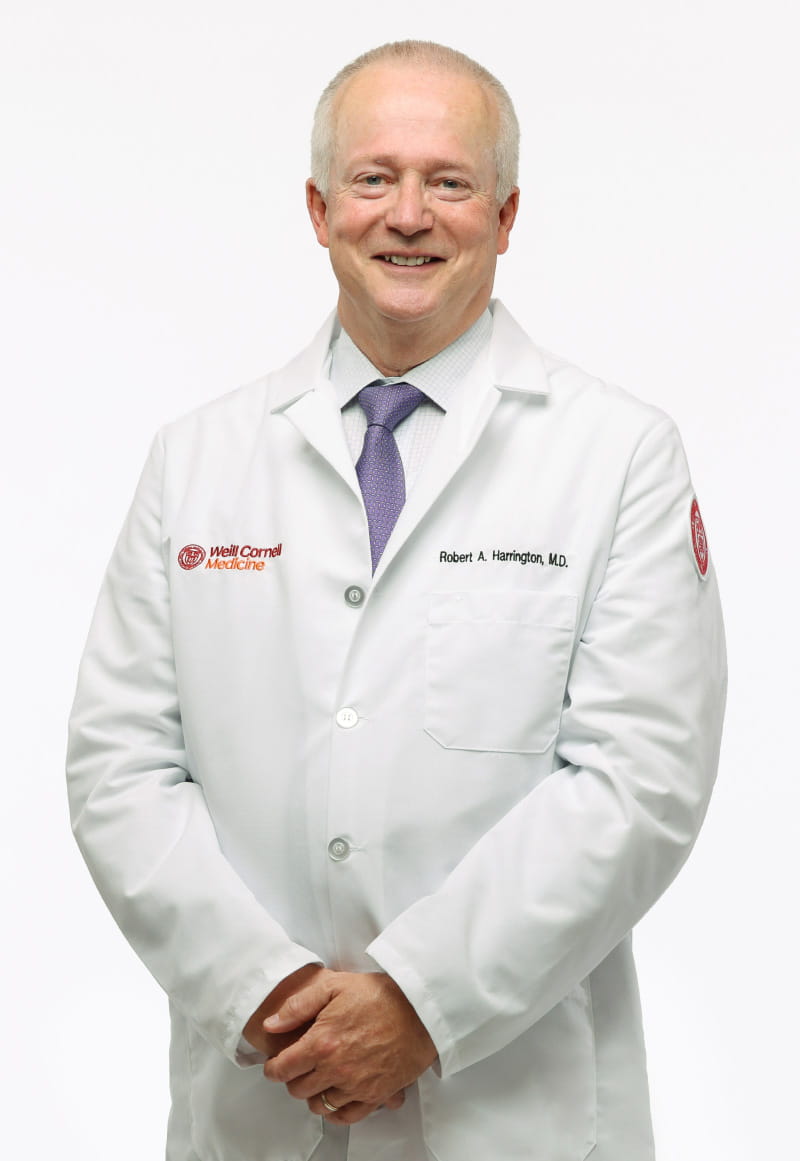Gold Heart Award winner's cardiology career honors his mother's memory

Raised in blue-collar Boston by a single mother who worked at a meat packing company, Dr. Bob Harrington says his humble roots shaped the values he upholds today. But it was his mother's death from cardiac arrest at 42 that set him on course to the career that became his life's work.
"My younger sister, who was 16, found her dead on the bathroom floor one morning," he said. "I think about it all the time. That's why, when you see me at an American Heart Association event, I always have my red dress lapel pen on."
The red dress is the national symbol for women and heart disease, which Harrington champions as a longtime volunteer and past president of the AHA. A global authority in acute ischemic heart disease, he is the Stephen and Suzanne Weiss Dean of Weill Cornell Medicine and provost of medical affairs at Cornell University.
"Outside of my family and job, serving the AHA has been the most important thing in my life," he said.
As the 2019–20 president, Harrington guided the organization through an unprecedented global pandemic with an emphasis on clinical excellence, research innovation, real-world evidence and health equity.
"His visionary leadership throughout his AHA career, and especially at the beginning of the pandemic, has been a guiding light for the organization," said Nancy Brown, CEO of the AHA. "Bob has a unique mix of strong business skills, research acumen and clinical mastery that has allowed him to make our mission impact stronger than ever, leaving an indelible mark on our organization and the field of cardiology."
Harrington's legacy also includes helping lead One Brave Idea, serving on the Executive Committee of the AHA Institute for Precision Cardiovascular Medicine, co-chairing the Research Leaders Academy Planning Committee and chairing the Silicon Valley Heart Ball.
For his transformative contributions, he will receive the AHA's highest volunteer honor — the Gold Heart Award — during the online National Volunteer Awards ceremony on Thursday, from 6 to 8 p.m. Central.
The root of it all
As he reflects on his path to this moment, Harrington recalls the community where it began.
"We lived in a tiny house next door to my mother's parents, Gramps and Nana Gatti. In the house next to that was my godfather, and next to that was my mother's sister and her family. It wasn't quite the Kennedy Compound, but it was a great way to live," he said with a smile.
Arthur 'Gramps' Gatti was an Italian immigrant with a seventh-grade education, who worked as a carpenter and a roofer. Nana Gatti was a maid in the dormitories at Harvard University.
"Kids like me didn't go to college, let alone Harvard," Harrington said. "Gramps would tell me, 'To get out of here, you've got to get an education.' "
Harrington heeded that advice and hit the books, rising to the top of his high school class. After applying and being accepted to several universities, he chose College of the Holy Cross 45 miles away in Worcester. Getting into college was easy for a scholar like him; paying for it was another story.
"We had no money, but my mom figured out a way," he said. "She took out loans, I took out loans and she worked hard. I got some scholarships … some financial aid. We cobbled it all together, and I went off to college."

With an eye on a future in medicine, he majored in chemistry at first, then switched to English after his freshman year. Without judgment, his mother gave him her blessing.
"How brave was that? Here's this woman, who's not had an education beyond high school, spending every dime she has for her oldest son to go to college," he said. "And she asks me, 'What do you want to do?' "
He was a college senior when she died. Everything he's done since then has been to honor her. His mentor, a fellow Holy Cross grad named Dr. Michael Collins, got him through the tough times when he was tempted to quit.
Harrington took full advantage of a liberal arts education, immersing himself in courses on history, political science, literary classics, theater, music and more. He figured he would stand out from other medical school applicants whose focus was science.
The strategy worked. After applying to at least eight medical schools, he was accepted to the Geisel School of Medicine at Dartmouth.
"I use it as an example that you only have to be given one opportunity, and it's what you do with that opportunity that makes the difference," he said.

Onward and upward
Harrington spent two years at Dartmouth then transferred to Tufts. After an internship and residency at the University of Massachusetts Medical Center, he trained in cardiology, interventional cardiology and research at the Duke Databank for Cardiovascular Disease (precursor to the Duke Clinical Research Institute) under its director, Dr. Robert Califf.
He later succeeded Califf as director, growing the institute into the world's largest academic research organization.
Then, Stanford University School of Medicine lured him west as chair of its department of medicine.
Meanwhile, Harrington accepted another big role as the top organizer for the AHA's flagship meeting, Scientific Sessions. He served two terms on the AHA's board of directors and a year as president-elect. In 2019, he became the organization's 84th president.
"Evidence matters" became his presidential mantra. As he noted in his inaugural address, funding is the perpetual challenge in pursuit of evidence, but the AHA stands in the gap as the largest nonprofit funder of cardiovascular and stroke research outside the federal government. Harrington's own handprints are evident on the organization's distribution of millions in Rapid Research Grants for fast-tracked studies of how COVID-19 impacts cardiovascular and cerebrovascular systems.
He remains actively engaged with the AHA, serving as an adviser and participating on panels, including groundbreaking discussions on the emerging science of cardiorenal medicine. And that English degree has served him well in authoring more than 760 peer-reviewed papers, articles and book chapters.
Harrington says he cherishes the relationships he has built during more than 30 years of doing research, caring for patients and volunteering for the AHA.
"Being educated at Holy Cross, I'm deeply influenced by the Jesuits [maxim], men and women for others," he said. "I want to be remembered as someone who lived the AHA mission to be a relentless force for a world of longer, healthier lives."






